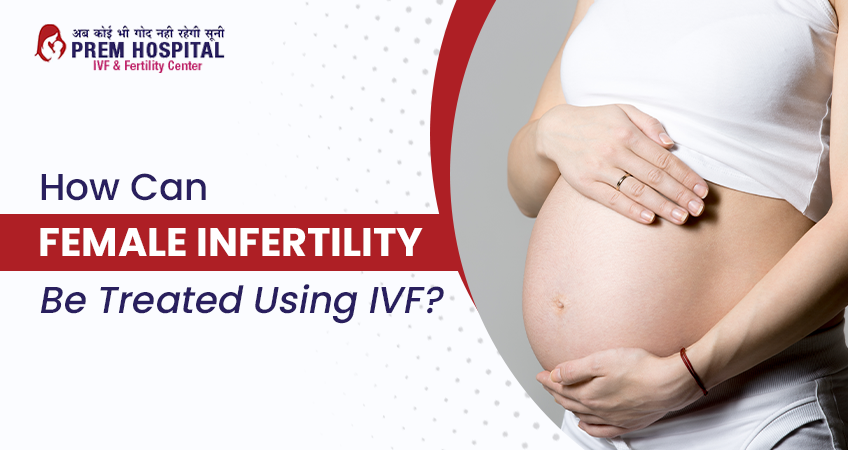Even after unprotected intercourse, if you cannot conceive in a year, it’s time to seek medical advice for evaluation and infertility treatment. In infertility, evaluation of both male and female partners is necessary. Your doctor will ask you about your medical history and do a physical examination.
Fertility Tests Include
Ovulation testing
With an over-the-counter ovulation prediction kit, you can check the increase in luteinizing hormone (LH), which happens before ovulation at home. Your doctor can also suggest doing a progesterone test, a hormone produced after ovulation.
Hysterosalpingography
In this test, an X-ray is injected into the uterus to know the reasons behind infertility. This test also reveals whether the liquid passes out of the uterus and spills out from your fallopian tube. In case of any problem, your doctor will evaluate further.
Ovarian reserve testing
Through this testing, your doctor will determine the quantity and quality of eggs available for ovulation. Women older than 35 are at risk of depleting their egg supply.
Another hormone testing
Other tests check the presence of ovulatory hormones and pituitary and thyroid hormones obstructing the reproductive processes.
Female Infertility Treatment
Female infertility Treatments which can help couples to conceive naturally depend on many factors, which include couples’ age, duration of infertility, health status, etc.
Intercourse frequency
The first strategy every couple tries to conceive is frequent intercourse during ovulation. Usually, a woman’s menstrual cycle lasts between 28-32 days. Counting the first day of your last period, a woman will ovulate between days 11 and 21. You should consult your doctor for evaluation if your menstrual cycle is shorter than 21 days or longer than 35 days.
Other treatments
However, intercourse in the fertility window is insufficient for a couple to conceive in case of infertility issues. Your doctor would like to know the root cause of infertility.
In females, doctors may suggest some fertility drugs induce ovulation. Also, in case of a blocked or scarred fallopian tube, your doctor may suggest surgical repair for the easy journey of the egg. Also, your doctor would suggest IVF in such a scenario.
IVF Treatment For Pregnancy (Step-by-step procedure)
Estrogen or birth control pills
Before undergoing IVF treatment for pregnancy, your doctor may prescribe birth control pills to restrict ovarian cyst development and control your menstrual cycle timing. Such medication will increase the number of mature eggs during the egg retrieval procedure. Some patients may be prescribed a combination of progesterone and estrogen, while others are only prescribed estrogen.
Ovarian stimulation
During every natural cycle, a group of eggs begin to mature each month. But in each month, only one egg attains maturity to ovulate. The remaining immature eggs disintegrate.
However, in the IVF cycle, injectable hormones are given to mature all the eggs in one cycle. It implies instead of having only one matured egg; you can have many matured eggs. The dose, type and frequency of medications will depend on the patient’s medical history.
Egg retrieval
- Your fertility specialist does an ultrasound to guide a needle into your ovaries through the vagina. The needle is attached to a suction device that extracts eggs from the follicle.
- These extracted eggs are placed in a dish containing a special solution. The dish is then kept in an incubator.
- Mild sedation or medications are used throughout the procedure to minimize the discomfort.
Fertilization
After egg retrieval, your fertility specialist will try to mature all the eggs through the ICSI process. It involves the injection of sperm into matured eggs. Usually, 70% of eggs mature through this procedure. If successful, these fertilized eggs will convert into an embryo.
Embryo development
In the next 5-6 days, embryo development will start. This process will be kept under observation. Your embryo should face the hurdles to become suitable for transfer into the uterus. On average, 50% of embryos reach the blastocyst stage. This stage is most suitable for transfer into the uterus.
Embryo transfer
There are two ways to embryo transfer. One is a fresh embryo, and the other is a frozen embryo. The transfer procedure for both types of embryos is the same. A fresh embryo implies the insertion of the embryo happens after 3-7 days of egg retrieval. Such an embryo is ‘fresh’ and not frozen.
Frozen embryo transfer means a frozen embryo from your previous IVF cycle is inserted into the uterus. It is the most common practice and has more chance of getting live birth. Frozen embryo transfer can even happen after years of egg retrieval.
Pregnancy
Pregnancy will happen when the transferred embryo implants into the uterus lining. Your specialist will do a blood test after 9-14 days of embryo transfer to confirm your pregnancy.
The same steps will be followed in the case of donor eggs. The egg donor will complete the process of ovarian stimulation and egg retrieval. After fertilization, doctors will transfer the embryo to the desired person uterus who wants to carry the pregnancy.
Conclusion
IVF treatment is a complicated process. You need to remain open with your healthcare provider, to understand all the steps involved. Also, choosing the best fertility hospital is important to make your entire journey happy and smooth.

